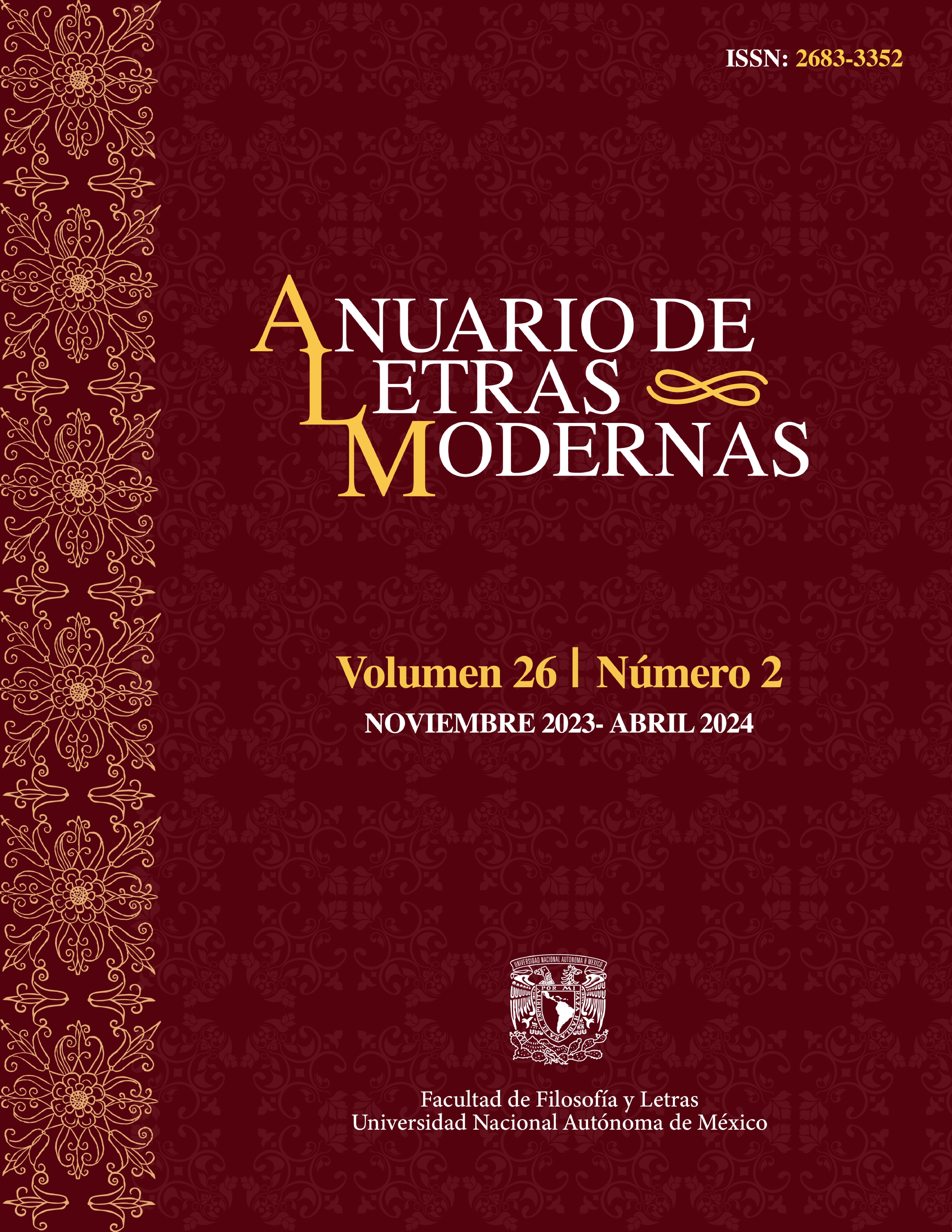Emily Dickinson: No God, No Husband, No Editor or “Publication — is the Auction / Of the Mind of Man —”
Main Article Content
Abstract
This article seeks to explore some of the possible reasons behind Emily Dickinson’s decision not to publish as she expressed them in some poems and letters. Although Dickinson did not voice proto-feminist ideas as some of her female contemporaries did, her life and work show that she often struggled with patriarchal institutions, including the literary tradition and marketplace. More specifically, this article claims that the author was aware that the “price” of publishing her poetry consisted in subjecting it to processes of normalization, especially in terms of form, according to the editorial standards of the time, which were largely established by a masculine literary elite. In opposition to those standards, Dickinson’s poetry instead responds to what, based on Northrop Frye’s work, is here called lyric precision, a treatment of poetic form that subordinates predetermined patterns to the poem’s own rhythmic, affective, intellectual, and perceptual findings. This article thus examines excerpts from the first three letters sent by the poet to the editor Thomas Wentworth Higginson in 1862. It also analyzes “I’m Nobody! Who are you?” (M128, Fr260), one of the poems edited by Higginson and Mabel Loomis Todd for Poems, Second Series (1891), and “Publication – is the Auction” (M386, Fr788), a poem that exhibits the principle of lyric precision at work while Dickinson delivers one of her most unequivocal commentaries on the price of publishing.
Article Details

This work is licensed under a Creative Commons Attribution-NonCommercial-NoDerivatives 4.0 International License.
References
Aldrich, Thomas Bailey. (1892, enero). “In Re Emily Dickinson” (en línea). The Atlantic Monthly, January 1892. Recuperado de https://www.theatlantic.com/magazine/archive/1892/01/in-re-emily-dickinson/634194/.
Attridge, Derek. (1996). Poetic Rhythm: An Introduction. Cambridge University Press.
Brigham Young University. (2007). Emily Dickinson Lexicon. https://edl.byu.edu/index.php.
Dickinson, Emily. (1866, 14 de febrero). “The Snake”. Springfield Republican, p. 6. Recuperado de https://www.edickinson.org/assets/static_pages/The%20Snake%207268_1866Feb14_0001-5e21311e91cc8adf1f260ba930114b1a916441af3b690f0c208bf52f6ed92884.jpg.
Dickinson, Emily. (1891). “I’m nobody! Who are you?”. En Poems, Second Series (p. 21). Roberts Brothers.
Dickinson, Emily. (1958). “260” [Carta a T.W. Higginson]. En Thomas H. Johnson (Ed.), The Letters of Emily Dickinson, Vol. II (p. 403). Harvard University Press.
Dickinson, Emily. (1958a). “261” [Carta a T.W. Higginson]. En Thomas H. Johnson (Ed.), The Letters of Emily Dickinson, Vol. II (p. 404-405). Harvard University Press.
Dickinson, Emily. (1958b). “265” [Carta a T.W. Higginson]. En Thomas H. Johnson (Ed.), The Letters of Emily Dickinson, Vol. II (p. 408-409). Harvard University Press.
Dickinson, Emily. (1958c). “316” [Carta a T.W. Higginson]. En Thomas H. Johnson (Ed.), The Letters of Emily Dickinson, Vol. II (p. 450-451). Harvard University Press.
Dickinson, Emily. (2016). “Publication – is the Auction”. En Cristanne Miller (Ed.), Poems, As She Preserved Them (p. 386). Harvard University Press.
Dickinson, Emily. (2016a). “A narrow Fellow in the Grass”. En Cristanne Miller (Ed.), Poems, As She Preserved Them (p. 489). Harvard University Press.
Dickinson, Emily. (2016b). “I’m Nobody! Who are you?”. En Cristanne Miller (Ed.), Poems, As She Preserved Them (p. 128). Harvard University Press.
Dickinson Editing Collective. (2013). “Letter-Poem, A Dickinson Genre”. Dickinson Electronic Archives. https://www.emilydickinson.org/node/1667.
Dietrick, Ellen Battelle. (1989 [1892, enero]). “One Sided Criticism”. En Willis J. Buckingham (Ed.), Emily Dickinson’s Reception in the 1890s: A Documentary History (pp. 291-292). University of Pittsburgh Press.
Frye, Northrop. (1957). Anatomy of Criticism. Princeton University Press.
Howe, Susan. (2007). My Emily Dickinson. New Directions.
Johnson, Thomas H. (1961). “Introduction”. En Thomas H. Johnson (Ed.), The Complete Poems of Emily Dickinson (pp. v-xi). Back Bay Books.
Kirk, Connie Ann. (2008). “Climates of the Creative Process: Dickinson’s Epistolary Journal”. En Martha Nell Smith y Mary Loeffelholz (Eds.). A Companion to Emily Dickinson (pp. 334-347). Blackwell.
Lattig, Sharon. (2020). Cognitive Ecopoetics: A New Theory of Lyric. Bloomsbury.
Lee, Maurice S. (2022). “Dickinson Uncut: Reading and Not Reading in Print Culture”. En Cristanne Miller y Karen Sánchez-Eppler (Eds.), The Oxford Handbook of Emily Dickinson (pp. 319-335). Oxford University Press.
Loeffelholz, Mary. (2016). The Value of Emily Dickinson. Cambridge University Press.
Manson, Michael L. (2008). “‘The Thews of Hymn’: Dickinson’s Metrical Grammar”. En Martha Nell Smith y Mary Loeffelholz (Eds.), A Companion to Emily Dickinson (pp. 368-390). Blackwell.
Martin, Wendy. (2007). The Cambridge Introduction to Emily Dickinson. Cambridge University Press.
Messmer, Marietta. (1998). “Dickinson’s Critical Reception”. En Gudrun Grabher, Roland Hagenbüchle y Cristanne Miller (Eds.), The Emily Dickinson Handbook (pp. 299-322). University of Massachusetts Press.
Miller, Cristanne. (2008). “Dickinson’s Structured Rhythms”. En Martha Nell Smith y Mary Loeffelholz (Eds.), A Companion to Emily Dickinson (pp. 391-414). Blackwell.
Miller, Cristanne. (2012). Reading in Time: Emily Dickinson in the Nineteenth Century. University of Massachusetts Press.
Miller, Cristanne. (2016). “Introduction”. En Cristanne Miller (Ed.), Emily Dickinson’s Poems, As She Preserved Them (pp. 1-22). The Belknap Press.
Miller, Cristanne; Sánchez-Eppler, Karen. (2022). “Introduction”. En Cristanne Miller y Karen Sánchez-Eppler (Eds.), The Oxford Handbook of Emily Dickinson (pp. 1-13). Oxford University Press.
Niles, Thomas. (1958). “813b” [Carta a Emily Dickinson]. En Thomas H. Johnson (Ed.), The Letters of Emily Dickinson, Vol. III (p. 769). Harvard University Press.
Satelmajer, Ingrid. (2008). “Fracturing a Master Narrative, Reconstructing ‘Sister Sue’”. En Martha Nell Smith y Mary Loeffelholz (Eds.), A Companion to Emily Dickinson (pp. 37-55). Blackwell.
Sewall, Richard. (1998). “The Continuing Presence of Emily Dickinson”. En Gudrun Grabher, Roland Hagenbuchle y Cristanne Miller (Eds.), The Emily Dickinson Handbook (pp. 3-7). University of Massachusetts Press.
White Heat. (s.f.). “April 16-22: Poems in the first letter to Higginson” [entrada de blog]. White Heat. Emily Dickinson in 1862: A Weekly Blog. Recuperado de https://journeys.dartmouth.edu/whiteheat/april-16-22-poems-on/.
Weiner, Joshua. (2008). “‘Zero to the Bone’: Thelonious Monk, Emily Dickinson, and the Rhythms of Modernism”. En Martha Nell Smith y Mary Loeffelholz (Eds.), A Companion to Emily Dickinson (pp. 490-495). Blackwell.

